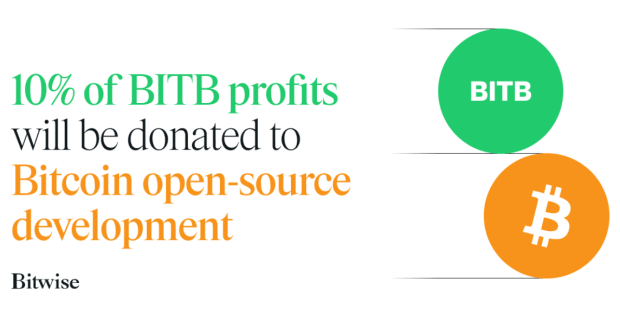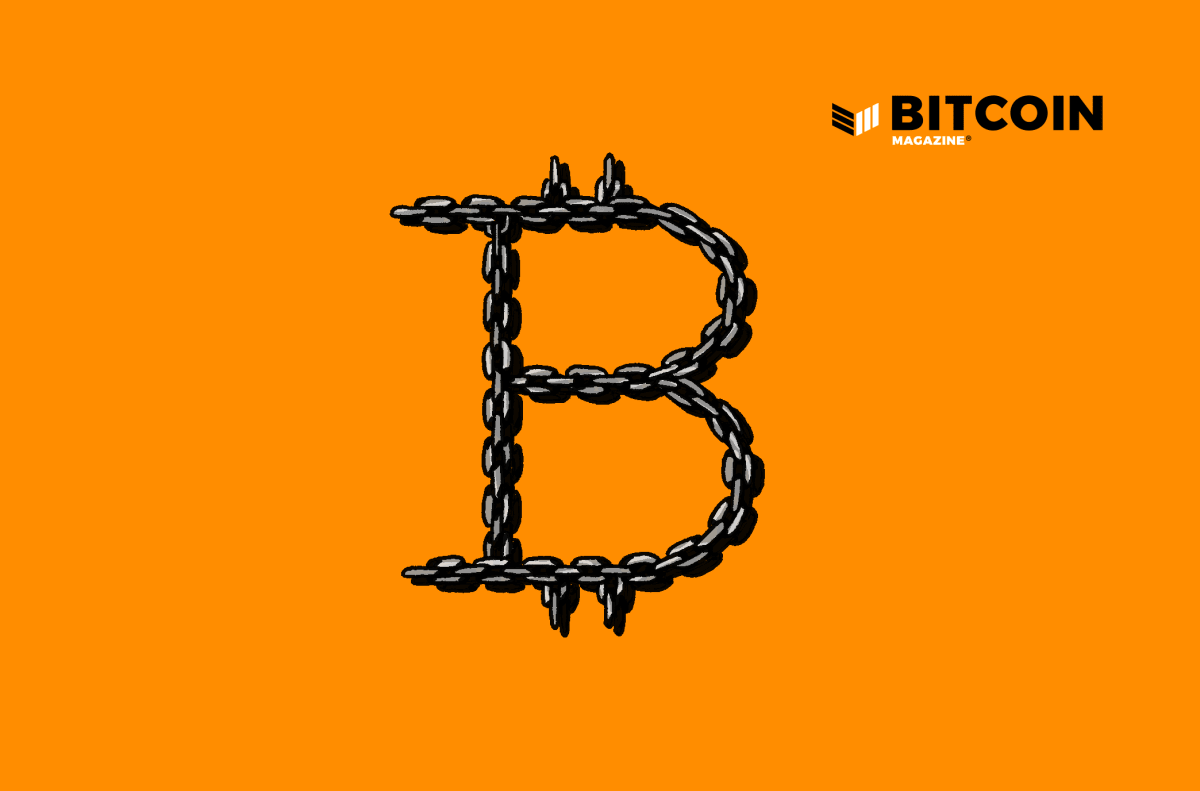 On Thursday, the team behind BNB Chain introduced a novel Rollup-as-a-Service (RaaS) offering for the development of layer two blockchains (L2s) atop the BNB Chain. The team detailed that the service equips sizable decentralized applications (dapps), enterprises, and the BNB Chain with the essential technological framework required for launching specific L2s on BNB Smart Chain […]
On Thursday, the team behind BNB Chain introduced a novel Rollup-as-a-Service (RaaS) offering for the development of layer two blockchains (L2s) atop the BNB Chain. The team detailed that the service equips sizable decentralized applications (dapps), enterprises, and the BNB Chain with the essential technological framework required for launching specific L2s on BNB Smart Chain […]Source link ]]>
 PRESS RELEASE. LBank Labs, a prominent blockchain venture fund, has invested in Versatus, the Universal dApp Engine, to address one of the most critical roadblocks in realizing Web3’s immense promise – the developer shortage. Despite over 27 million developers worldwide, less than 0.1% build for Web3. And out of those few, most leave within a […]
PRESS RELEASE. LBank Labs, a prominent blockchain venture fund, has invested in Versatus, the Universal dApp Engine, to address one of the most critical roadblocks in realizing Web3’s immense promise – the developer shortage. Despite over 27 million developers worldwide, less than 0.1% build for Web3. And out of those few, most leave within a […]Source link ]]>
 Russia has proposed the development and implementation of a BRICS-wide payment system that would use central bank digital currencies (CBDCs) to manage trade settlements. The BRICS bridge, as referred to by Russian Finance Minister Anton Siluanov, would address the fragmentation of the current payment system outside the West’s “unfriendly infrastructure.” Russia Hints at Using CBDC […]
Russia has proposed the development and implementation of a BRICS-wide payment system that would use central bank digital currencies (CBDCs) to manage trade settlements. The BRICS bridge, as referred to by Russian Finance Minister Anton Siluanov, would address the fragmentation of the current payment system outside the West’s “unfriendly infrastructure.” Russia Hints at Using CBDC […]Source link ]]>
Belarus, a landlocked country in Eastern Europe, is making significant strides in the development of a Central Bank Digital Currency (CBDC) platform. The country is leveraging the power of Hyperledger Fabric, a blockchain framework implementation, to create a robust, secure, and efficient CBDC platform. This article explores the progress Belarus is making in this domain and the potential implications for the global financial landscape.
Understanding CBDCs and Hyperledger Fabric
Before delving into Belarus’s progress, it’s crucial to understand what CBDCs and Hyperledger Fabric are. A CBDC is a digital form of a country’s fiat currency, issued and regulated by its central bank. It’s different from cryptocurrencies like Bitcoin because it’s centralized and regulated, unlike the decentralized nature of cryptocurrencies.
Hyperledger Fabric, on the other hand, is a blockchain framework that allows components, such as consensus and membership services, to be plug-and-play. It’s designed to provide a foundation for developing applications or solutions with a modular architecture.
Belarus’s Progress in CBDC Development
Belarus has been making significant strides in the development of its CBDC platform. The country’s central bank, the National Bank of the Republic of Belarus, has been actively exploring the potential of blockchain technology and its application in the financial sector.
- The bank has been working on a pilot project to develop a digital version of the Belarusian ruble using Hyperledger Fabric. The project aims to create a secure, efficient, and transparent platform for the issuance, distribution, and management of the digital ruble.
- Belarus has also been collaborating with other countries and international organizations to share knowledge and best practices in CBDC development. This includes participation in the Bank for International Settlements’ CBDC research group.
Why Hyperledger Fabric?
Belarus’s choice of Hyperledger Fabric for its CBDC platform is not accidental. Hyperledger Fabric offers several advantages that make it an ideal choice for such a project.
- Security: Hyperledger Fabric provides a secure and robust platform for developing blockchain applications. It uses advanced cryptographic techniques to ensure data integrity and confidentiality.
- Scalability: Hyperledger Fabric is highly scalable, allowing it to handle a large number of transactions per second. This is crucial for a CBDC platform, which needs to handle a high volume of transactions.
- Modularity: Hyperledger Fabric’s modular architecture allows components to be easily added or replaced. This makes it easier to adapt the platform to changing needs and requirements.
Implications for the Global Financial Landscape
Belarus’s progress in CBDC development has significant implications for the global financial landscape. It demonstrates the potential of blockchain technology in transforming the financial sector and paves the way for other countries to follow suit.
- Increased Efficiency: CBDCs can make financial transactions more efficient by reducing transaction times and costs. They can also improve financial inclusion by making banking services more accessible to the unbanked population.
- Greater Transparency: Blockchain technology can increase transparency in financial transactions, making it harder for illicit activities like money laundering and fraud.
- Enhanced Security: The use of blockchain technology can enhance the security of financial transactions, reducing the risk of cyber-attacks and data breaches.
Conclusion
In conclusion, Belarus is making significant strides in the development of a CBDC platform using Hyperledger Fabric. This not only demonstrates the country’s commitment to embracing digital transformation but also highlights the potential of blockchain technology in revolutionizing the financial sector. As more countries explore the potential of CBDCs, we can expect to see a significant shift in the global financial landscape in the coming years.
]]>The donations will benefit three esteemed non-profit organizations – Brink, OpenSats, and the Human Rights Foundation’s Bitcoin Development Fund.

“Bitcoin was launched 15 years ago without a fundraise and has always been maintained by a dedicated community of open source developers,” said Bitwise CEO Hunter Horsley. “We’re excited for the Bitwise Bitcoin ETF (ticker: BITB) to provide a source of recurring funding for those unsung heroes who work tirelessly to improve the Bitcoin network’s security, scalability, and usability every day.”
The donations, to be made annually for the next decade, come without any strings attached, reinforcing Bitwise’s long-term dedication to fostering sustainable support for Bitcoin Core Development.
“It is important to support Bitcoin Core Development in a long-term sustainable way,” said Mike Schmidt, the executive director of Brink. “Bitwise’s decade-long pledge is a win-win-win with Bitwise profits leading to developer funding leading to improvements to the open source software underpinning the industry.”
The recipient organizations were carefully chosen based on their established track record and commitment to funding Bitcoin open-source development, subject to annual review for continued alignment with Bitwise’s mission, according to the release.
Acknowledging Bitwise’s proactive stance, Matt Odell, cofounder of OpenSats, lauded the company for setting a precedent in supporting open-source contributors vital to the Bitcoin ecosystem: “It is great to see large institutions supporting the open-source contributors who make this ecosystem possible. Bitwise is leading by example for all Bitcoin ETF issuers going forward.”
This commitment to donating 10% of spot Bitcoin ETF profits doubles what another issuer, VanEck, pledged to donate last Friday. VanEck will also be donating their profits to Brink.
“Bitcoin is a critical piece of freedom technology serving financially oppressed people around the world today,” said Alex Gladstein, the chief strategy officer of the Human Rights Foundation. “We started the Bitcoin Development Fund to support the developers who make this all possible, and we’re delighted that Bitwise is committed to supporting this important cause.”
For more details on BITB and the donation program, interested parties can visit their website here, heralding a new era of sustained support for Bitcoin’s foundational development.
]]>
In what is perhaps the most articulate and thorough Bitcoin grant offering to date, the Human Rights Foundation (HRF) has announced a 20 BTC set of bounty challenges in support of open-source Bitcoin developers building tools and services that increase the functionality of Bitcoin. These selections, inspired by the HRF’s research and work with activists across the world, were carefully chosen to perpetuate usability and increase privacy applications within Bitcoin, the Lightning Network, ecash and Nostr.
The challenges will run through the end of 2024, with any unclaimed bounties being converted back into the HRF’s Bitcoin Development Fund. The bounties themselves have a clear privacy, censorship-resistance, and self-sovereignty focus, bringing much needed attention towards some of the greater problems Bitcoin faces today.
The first bounty is a 2 BTC reward to port the Bitcoin UI Kit to the open-source Penpot project from its current Figma file format. This kit is a large set of design components for builders to use when developing Bitcoin projects. In its current format, its use is limited to those operating proprietary software, and the HRF aims to sponsor the “replication of the Bitcoin UI Kit on Penpot,” actualizing free access and self-hosted instances.
The second bounty is a 2 BTC reward for a serverless implementation of a payjoin protocol. The bounty specifically calls for a “production-ready version 2 payjoin protocol which may send and receive Payjoin transactions without requiring a sender or recipient to operate a public server.” The Serverless Payjoin bounty asks for use of BIP-21 unified bitcoin URIs, and to remain independent from a trusted third party (hence serverless) which “could expose user privacy in a non-trivial way.”
The third bounty is another 2 BTC reward for the creation of a Nostr client implementation of end to end encrypted group chats which is incapable of leaking metadata to potentially malicious third parties. In order to be eligible, the group chat must enable three or more users to communicate, with no ability for outside adversaries to gather the content of the messages, nor the identity or frequency of the users messaging.
The fourth bounty is a 2 BTC reward for a mobile Bitcoin wallet capable of receiving and sending Silent Payments without the use of a client-side full node. The wallet must be open-source and multi-platform, with a backend that is interoperable with other mobile wallets. The bounty asks for compliance with the Silent Payments BIP, written by Josie Bake.
The fifth bounty, a 2 BTC reward for Human Readable Offers, calls for a bolt 12 offer generator to be integrated into a mobile wallet. Ideally, a bolt 12 offer could be communicated from a phone screen to a human without the use of copy and paste or a QR code scan, similar to how a Bitcoin or Lightning address is displayed.
The sixth bounty is a 2 BTC reward for a Lightning address generator within a mobile wallet that is self-custodial and accessible with just a smart phone. This implementation “should not require the user to set up their own web server.”
The seventh bounty is a 2 BTC reward for a mobile integration of border wallet functionality into a current Bitcoin wallet. The idea of a border wallet is to allow users to generate and practice memorizing their seed phrase for moments of cross-jurisdictional movement.
The eighth bounty, a 2 BTC reward for easy multisig functionality, is aiming to bring coordinated 2-of-3 multi-signature usability and generation within a mobile wallet at the tap of a button. The bounty also mentions the mobile wallet must remain self-custodial, complete with an open-source method to recover funds beyond the multisig application itself.
The ninth bounty is a 2 BTC reward for a self-custodial wallet implementation powered by FROST, or flexible round-optimal Schnorr threshold signatures. This dynamic multisig protocol must allow for modification of the signer set without transferring the funds to a different address.
The tenth and final bounty is a 2 BTC reward for the ecash protocol, Cashu. This bounty, unlike the others, is split up into four 0.5 BTC bounties, with specific requirements for further applications of this open-source Chaumian ecash system. Bounty A calls for an iOS Cashu app, while Bounty B calls for an Android Cashu app, both requiring a fully functioning, open-source wallet with the capability to support multiple mints, use seed phrase backups for fund recovery, as well as send and receive ecash over Nostr. Bounty C aims to bring to life an open-source Cashu web widget capable of enabling anonymous payments for paywalled content, capable of interacting with a user’s bitcoin address. The final bounty, Bounty D, is a half bitcoin reward for actualizing Cashu-TS backup restore, Cashu-TS being a popular Cashu wallet library for application development. Users must be able to restore balances across various implementations of Cashu in order to provide security of users via a seed phrase back up scheme akin to how most users back up their bitcoin wallet.
The HRF stated that this is an “initial set” of 10 bitcoin challenges, and more bounties may be added as time goes on. The team or individual developer who “fully solves” any of the Bitcoin bounty challenges will be eligible to receive the 2 BTC bounty. All eligible submissions will be discussed among external industry experts in order to select the submission best meeting the requirements of their challenge.
Individuals and parties interested in participating are asked to contact [email protected] with any question, and more details about the bounties can be found here.
]]>A crypto fund is an investment fund that primarily focuses on investing in cryptocurrencies or digital assets. It allows investors to gain exposure to the crypto market without having to purchase individual coins or tokens themselves. Instead, these funds pool money from multiple investors to purchase various cryptocurrencies, often including Bitcoin (BTC), Ether (ETH) and other popular tokens.
Crypto funds can also be categorized based on their investment strategies. For instance, some funds may invest exclusively in Bitcoin, while others may invest in a diverse range of cryptocurrencies or focus on investing in tokens that have promising underlying technology or are backed by established companies. Additionally, some funds invest in crypto-related companies like mining or trading firms.
Investors in crypto funds may include high-net-worth individuals, family offices, institutional investors and retail investors. Some crypto funds may have minimum investment requirements, while others may be open to smaller investors.
Rachid Ajaja, founder of decentralized finance (DeFi) platform AllianceBlock, told Cointelegraph, “Crypto funds are an important element of the crypto ecosystem. First and foremost, they provide stability for selected projects to continue building, no matter their market conditions.”
“They’re usually composed of industry veterans, so they know what trends to invest in to drive the most value for the sector. Their levels of investment and capital mean they can offer a more comprehensive level of risk management that otherwise could not be cultivated by individual traders.”
Crypto funds face unique risks, including the volatility of the crypto market, the potential for hacking or fraud, and regulatory uncertainty. To mitigate these risks, crypto funds may use various risk management strategies, such as diversification, hedging or holding cash reserves. Crypto funds are investment vehicles that expose investors to the crypto market.
How crypto funds shape the market
Crypto funds play a significant role in shaping the crypto market’s development. They are investment vehicles that expose investors to the crypto market by pooling money from multiple investors and using it to purchase a diverse range of cryptocurrencies. Crypto funds can be structured differently and employ various investment strategies and risk management techniques.
For example, the Asia-based crypto fund HashKey Capital is an institutional asset manager investing exclusively in blockchain technology and digital assets and has managed over $1 billion in client assets. Other notable crypto funds include a16z (Andreessen Horowitz), with over $4.5 billion in management; Polychain Capital, with $2 billion in management; and Coinbase Ventures, with a $6.6 billion portfolio.
Magazine: ‘Moral responsibility’: Can blockchain really improve trust in AI?
One of the primary ways crypto funds impact the market is by providing liquidity. They facilitate the buying and selling of cryptocurrencies, hence raising trade volumes and dampening volatility, both of which attract institutional investors. Additionally, crypto funds can drive demand for cryptocurrencies as they invest in these assets and help to create positive sentiment around them.
Deng Chao, CEO of digital asset investment group HashKey, told Cointelegraph, “Crypto funds can impact market liquidity in many ways. Firstly, by helping projects to scale and grow, crypto funds help take projects to a level where they have enough users and network effects to have more liquidity. Typically, better network effects equal better velocity, which equals more liquidity in the market.”
Chao continued, “Asset liquidity and VC investment are usually inversely related. VCs [venture capital firms] typically invest in illiquid startups with the hope that their growth will turn those investments into liquid assets. This is a form of liquidity/time arbitrage. Crypto VCs will handhold their portfolio projects until they have sufficient size and credibility so that other players — such as a corporation, private equity or crypto exchanges — can step in and provide additional liquidity.”
Ajaja added that funds can “create new efficiencies in the market. For example, Jump Trading influenced tighter bid-ask spreads and efficient price discovery and participated in arbitrage, making smaller price discrepancies across exchanges.”
“When funds trade derivatives and similar instruments on major platforms like BitMEX and Deribit or participate in DeFi platforms like Aave and Compound, the entire market’s liquidity rises for the tokens traded and adds to the market stability, which benefits everyone,” he said.

Crypto funds can also encourage innovation in the crypto market. By investing in tokens with promising underlying technology, they can support the development of new projects and technologies, ultimately benefiting the entire crypto ecosystem.
Another way crypto funds impact the market is by providing access to smaller investors. By pooling money from multiple investors, crypto funds can provide access to the crypto market for smaller investors who may not have the resources or expertise to invest in individual cryptocurrencies. This can help democratize crypto market access and increase its overall reach.
Finally, crypto funds can shape the regulatory landscape around cryptocurrencies. As they become more prevalent, they can help create a more structured regulatory framework for the market, increasing investor confidence and attracting more institutional investors.
Current legal challenges for crypto funds
Crypto funds face a range of regulatory challenges that stem from the unique characteristics of cryptocurrencies and the lack of a consistent regulatory framework across jurisdictions.
Many countries have yet to define a clear regulatory framework for cryptocurrencies, and those that have done so often have different and sometimes conflicting regulations. This can make it difficult for crypto funds to navigate the regulatory landscape and comply with local laws.
Ajaja said, “The main challenges faced by these crypto funds revolve around maintaining compliance in an ever-changing environment. It takes a proactive, concerted effort to ensure consistent compliance and active participation with these governing bodies that make the rules.”
“This relationship with the regulators is necessary to ensure that participation rules contribute to a growing, thriving crypto economy. These funds must focus on compliance with MiCA Regulation and FATF rules, even though it will create higher operational costs and more complex business processes. This regulatory environment is ever-changing, shifting with financial and political winds. Any funds should be approached with proactive and cooperative compliance with key bodies.”
However, compliance can be difficult for crypto funds due to the pseudonymous nature of cryptocurrencies. Funds may need to implement additional measures, such as blockchain analysis tools, to ensure they don’t fall afoul of regulations.
Chao noted, “Crypto-related technologies evolve at an extremely fast pace. Innovation in the crypto space always outpaces regulations. This ends up being a challenge from the regulatory perspective. However, regulators will sooner or later catch up and might regulate it a few years later in a friendly or hostile manner. Saying this, funds need to carefully consider how future regulations might look and how regulations might impact the market.”
Recent: Stablecoin survival: Navigating the future amid global de-dollarization
The tax treatment of crypto assets is another area of uncertainty for crypto funds. Different jurisdictions may have different tax treatments for cryptocurrencies, which can create compliance challenges for funds operating in multiple countries. Additionally, the taxation of crypto assets may be subject to change as regulators and tax authorities grapple with emerging technology.
Crypto funds play a crucial role in shaping the crypto market’s development. They provide liquidity, drive demand, encourage innovation, professionalize the market, provide access to smaller investors, and shape the regulatory landscape. As the crypto market evolves, crypto funds will likely become even more important in determining its future direction.
]]>

On stage at the Bitcoin 2023 conference, Brink announced a matching campaign for donations from Bitcoin mining firm Marathon Digital Holdings to support the work of Bitcoin Core developers. Marathon will match donations made to Brink on a two-for-one basis for the duration of the conference, which ends on May 20, and then match donations one for one through the end of the year, up to $1 million total.
“We’re going to match dollar for dollar $500,000-worth of donations that Brink receives for Core developers. More importantly, we will donate two-for-one if you donate money during this conference,” said Fred Thiel, Marathon’s CEO. “So, if you believe in the importance of supporting Core development efforts … then I strongly urge you (to) donate 50 cents, $1, whatever you can during the conference.”
By committing to match all third-party donations up to an aggregate of $500,000 until December 31, 2023, Marathon hopes to advance Brink’s support for the developers who maintain and upgrade Bitcoin’s code. Since 2020, Brink has supported numerous developers in their work to make Bitcon more accessible and advanced through grants, mentorship and education, including former lead maintainer Marco Falke, Lightning Network white paper author Tadge Dryja and Bitcoin Core PR Review Club’s Gloria Zhao.
“We have nine developers in five different countries that are all independent developers funded by Brink,” explained Mike Schmidt, the executive director of Brink. “I think we would all agree that we would want this Bitcoin software that’s powering all of this innovation on top to be better reviewed, better tested, better maintained, easier to run and more performant. So that’s why at Brink we fund grantees that are spending upwards of 50% of their time on testing and reviewing the Bitcoin Core code, proposing changes to the Core codebase and basically making that software more secure.”
Donations made to Brink through its website are now eligible for the match. Thiel framed the campaign as part of Marathon’s larger commitment to securing the Bitcoin network as a significant contributor of hash rate, the computing power that ensures Bitcoin’s immutability.
“We believe that it’s the most secure protocol out there and we think we and the rest of the industry should do everything they can to support the developers and really foment as much activity in the space as possible,” Thiel said.
]]>
In closing out his $1 million bet, Srinivasan made three $500,000 donations, one to fund Bitcoin Core development at Chaincode Labs, one to Give Directly and one to pseudonymous Twitter user James Medlock, who back in March offered to bet $1 million that the U.S. would not experience hyperinflation.

Brink, a Bitcoin development community, will use the donation to finance an annual salary of a developer contribution to Bitcoin.
Samara Asset Group, an alternative asset manager with a focus on Bitcoin, has donated $150,000 to Brink, a charitable Bitcoin development community. The donation will be used to finance the annual salary of a developer contributing to the growth and development of the Bitcoin network. Samara has committed to continuing this donation for the next three years.
The Bitcoin protocol is unique in that it has no foundation or corporate entity supporting its development. The pseudonymous creator of Bitcoin, Satoshi Nakamoto, disappeared roughly a decade ago, leaving the Bitcoin community to oversee its development. Charitable organizations, such as Brink, have become a popular method for donors to contribute to the Bitcoin ecosystem.
“At Samara, we believe the future of global capital markets are decentralized and democratized, with Bitcoin playing a vital role in the development of this inclusive financial world,” said Patrick Lowry, Samara CEO. “We are proud to back Bitcoin builders, not only by investing in many of the world’s best companies building infrastructure for Bitcoin, but now by donating to Brink to finance a developer for the next three years.”
Mike Schmidt, Executive Director of Brink, expressed his gratitude for Samara’s contribution to the Bitcoin community. “Bitcoin development is a common good and relies on organizations like Samara and individuals like Patrick to recognize the importance furthering the security, stability, and advancement of the Bitcoin software that underpins much of the entire industry,” he said.
Samara’s donation demonstrates its commitment to seeing the Bitcoin community thrive. The company is reportedly exploring an international listing in order to increase trading liquidity and reach new prospective shareholders.
]]>